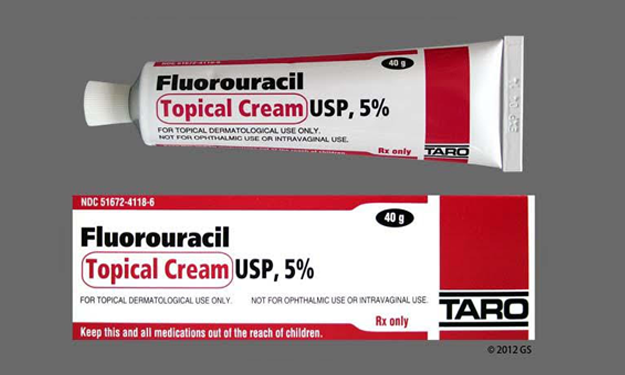Fluorouracil (5-FU) Toxicity in Pets

This article was originally published by Redbank Veterinary Hospitals, it was written by Eric N. Glass, MS, DVM, DACVIM, Neurology & Neurosurgery Department.
The Neurology & Neurosurgery and Critical Care Departments at Ethos Veterinary Health hospitals would like to make all pet owners aware of a potential lethal toxicity harming our pets. Each year we see dogs that have, unfortunately, ingested a human chemotherapeutic agent called 5-FU. Fluorouracil, also known as 5-FU, is a human chemotherapeutic ointment used for skin cancers such as superficial basal cell carcinoma, or actinic keratosis. Brand names of 5-FU include Fluoroplex ®, Efudex ® and Carac ®. The ointment is applied to the affected skin, and works by preventing synthesis of proteins in rapidly dividing cells, like tumor cells, which cause death of the cancer.
Unfortunately, most prescribing physicians do not know to warn patients of the risk associated with 5-FU to household pets. Additionally, there are absolutely NO warnings on the product packaging to keep the medication out of the reach of pets.
Who is Most at Risk?
We see ingestion of this medication most commonly in young dogs or puppies that inadvertently chew on the tube containing the ointment.
We have also examined dogs that die from ingestion of 5-FU after simply licking the owner’s skin, which contains the ointment.
Symptoms
5-FU causes a buildup of ammonia in the body, which is harmful to the nervous system. Dogs that have ingested 5-FU will present with an unsteady gait and whole body tremors that rapidly progress to uncontrollable seizures and eventual death.
Exposure
It is key to understand that even a VERY, VERY small amount of this material can be life threatening to a puppy – usually less than 10% of the tube. A simple sharp puppy tooth is all that is needed to pierce a tube of 5-FU and result in death of beloved household pet. The key is to PREVENT the dogs from ingesting 5-FU in the first place.
If Your Pet Has Ingested 5-FU
In the event your dog ingests 5-FU, or you suspect ingestion, it is paramount that you do the following:
- Immediately bring your pet to either your primary care veterinarian or a veterinary emergency hospital for an evaluation.
- Bring along any boxes or medication packaging, including the tube of medication so the veterinarian can use it to help assess the quantity of medication ingested.
- Safely keep the 5-FU out of reach of your pet during travel to the hospital.
Pet Poison Prevention & Who to Contact
Curious pets have been known to get into things they shouldn’t. Be sure to pet proof your home as much as possible to avoid inadvertent toxin exposure. In general, if you think your pet has ingested any hazardous substances, including home and garden products, human food and medications, poisonous plants, or other harmful objects, please contact your veterinarian, your local veterinary emergency hospital, or the ASPCA’s 24-hour emergency poison hotline at 1-888-426-4435.
Keep these phone numbers in a convenient, easy to find place at home. For a comprehensive list of hazards and toxins, visit aspca.org.
None of the manufacturers of 5-FU label the medication as toxic and deadly to household pets. There is no label on the ointment tube or packaging with the ASPCA 24-hour emergency poison hotline.
If you are taking this medication, we strongly encourage you to contact the manufacturers of 5-FU to insist that appropriate labeling be included on the ointment tube and packaging. You may also consider letting your prescribing physician know of the potential harm of 5-FU in household pets, so he/she can alert other patients.